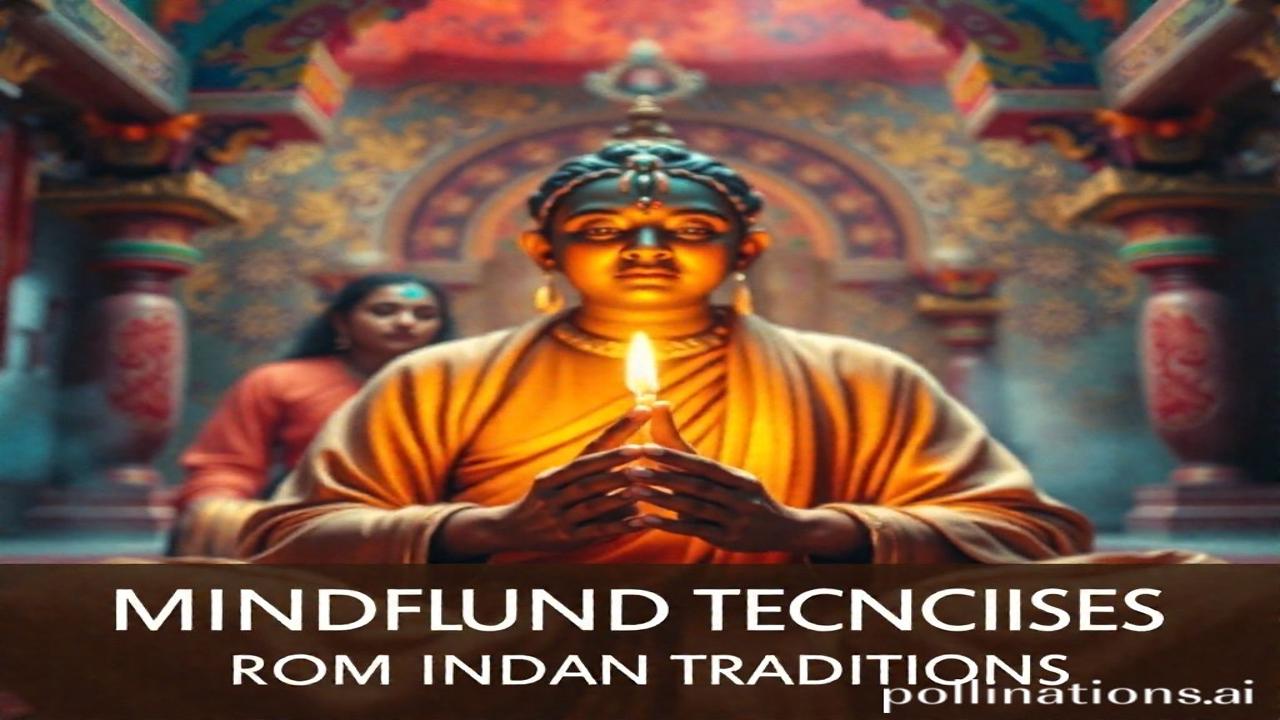The Whispers of Silence: Unearthing Mindfulness Techniques from Indian Traditions
Kabhi socha hai, uss dhool bhari zameen mein, jahan Vedon ki dhwani goonjti thi, wahan kitni shanti thi? Ek aisi shanti jo aaj bhi hamare andar dabi hai, bus use jagane ki der hai. The secrets to a calmer mind, a more present you, lie buried within the ancient wisdom of India. Let’s dig in!
Dhyan: Peeling Back the Layers of Mindfulness
So, what exactly are we talking about? Mindfulness, in its simplest form, is being fully present in the moment. It’s about noticing your thoughts, feelings, and sensations without judgment. While it’s become a buzzword these days, the concept has deep roots in Indian traditions.
The history of mindfulness techniques in India stretches back thousands of years, primarily rooted in Buddhist and Hindu philosophies. Think around 6th century BCE, with the rise of Buddhism and its emphasis on Vipassana (insight meditation). Hindu traditions, through practices like Yoga and Vedanta, also cultivated techniques for focusing the mind and achieving inner peace. The Yoga Sutras of Patanjali (believed to be compiled around 400 CE) provide a comprehensive guide to achieving a state of Samadhi – a state of profound meditative absorption.
Why is this important? Because in today’s chaotic world, where notifications buzz relentlessly and stress feels like a constant companion, these ancient techniques offer a pathway to reclaim our inner peace and find balance. Yeh hamari dharohar hai, our heritage, and it’s more relevant than ever.
Living in the Moment: Life Amongst Sages and Seekers
Imagine a small ashram nestled in the foothills of the Himalayas. The air is crisp and carries the scent of pine and incense. A young man, Arjuna, sits at the feet of his Guru, patiently learning the art of pranayama (breath control). He struggles to quiet the constant chatter in his mind, the worries about his family and the future battles he must face.
“Arjuna,” the Guru says gently, “the mind is like a restless monkey. You cannot control it by force. You must learn to observe it, to be a witness to its wanderings.”
Ma Rukmini, on the other hand, in the bustling city of Varanasi, finds her peace in chanting mantras while lighting diyas every evening. The rhythm of the chants, the flickering flame, becomes her anchor in the midst of daily responsibilities and family dramas. For her, mindfulness is not about escaping the world, but about finding the divine within the everyday.
These stories, whether real or imagined, highlight the essence of these ancient practices: finding moments of stillness and awareness amidst the chaos of life.
Bharatiyata and Modern Mindfulness: A Timeless Connection
Today, we see echoes of these techniques everywhere. Yoga studios sprout up in every city, meditation apps flood the app stores, and corporate wellness programs incorporate mindfulness training. Even in daily life, small rituals like lighting incense sticks, performing puja, or simply taking a few deep breaths before starting the day are subtle reminders of our cultural heritage of mindfulness.
The key is not just to blindly adopt these practices, but to understand the underlying principles and adapt them to our modern context. Bharatiyata, the essence of Indianness, lies in understanding that true well-being comes not from external achievements, but from cultivating inner peace and wisdom.
Fact vs. Fiction: The Mindfulness Myth
Log samajhte hain ki mindfulness ka matlab hai “sochna bandh karna,” lekin asli sach yeh hai ki mindfulness ka matlab hai “thoughts ko judge kiye bina dekhna.” It’s not about emptying your mind, but about changing your relationship with your thoughts. You’re not trying to suppress them, but rather observe them as passing clouds. That’s the power of detachment!
Sensory Overload: The Smell of Peace
Close your eyes. Imagine the warmth of the sun on your skin as you sit in a quiet garden. You hear the gentle hum of bees, the distant chanting from a nearby temple. The air is thick with the fragrance of jasmine and sandalwood. The earth feels cool beneath your feet. This is the kind of sensory immersion that can naturally lead to a state of mindfulness.
The Silent Teacher: A Parting Thought
“Chitta vritti nirodha.” This Sanskrit phrase, often translated as “the cessation of the fluctuations of consciousness,” encapsulates the ultimate goal of many Indian mindfulness practices. It’s a journey, not a destination. So, take a deep breath, embrace the present moment, and remember that the whispers of silence within you hold the key to unlocking your inner peace. Jai Hind!
